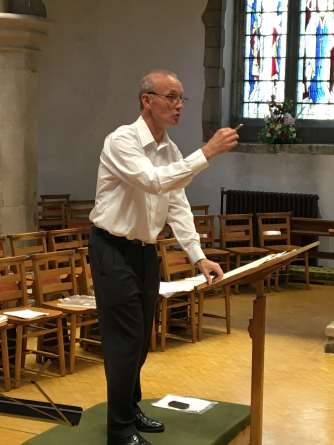Pinner Festival Choir, Orchestra & Soloists
Requiems by Michael Haydn & WA Mozart
Part of the Pinner Music Festival 2019
Add to my Calendar 15-06-2019 19:45 15-06-2019 21:45 36 Pinner Festival Choir, Orchestra & Soloists Mozart was 15 and already a busy composer and performer, when he attended three performances of the Requiem by Michael Haydn, younger brother of the famous Joseph. Haydn wrote his work in 1771, formally to mark the death of his employer but – more significantly – much affected by the death earlier that year of his only child. When Mozart came to write his great Requiem some twenty years later, at the end of his life, it was modelled closely on the structure of that by Haydn, who had become a collaborator and friend. Every section is deeply moving. It is said that Mozart was in tears as he sang the Lacrimosa on his death-bed to Süssmayer, who completed the work. This is a rare chance to hear the two works together, and to appreciate the connections and resonances. Pinner Parish Church, London DD/MM/YYYYDetails
Pinner Parish Church
Church Lane
Harrow
London
HA5 3AA
England
Programme
Michael Haydn – Requiem in C minor, MH 155
~ Interval ~
Wolfgang Amadeus Mozart – Requiem in D minor, K.626
Performers
David Gould – Director
Fiona Canfield – soprano
Diana Moore – mezzo-soprano
Anton Rich – tenor
Jonathan Stainsby – Bass
Pinner Festival Choir
Pinner Festival Orchestra
Other concerts in this Series (+)
Programme Note
Mozart was 15 and already a busy composer and performer, when he attended three performances of the Requiem by Michael Haydn, younger brother of the famous Joseph.
Haydn wrote his work in 1771, formally to mark the death of his employer but – more significantly – much affected by the death earlier that year of his only child.
When Mozart came to write his great Requiem some twenty years later, at the end of his life, it was modelled closely on the structure of that by Haydn, who had become a collaborator and friend. Every section is deeply moving. It is said that Mozart was in tears as he sang the Lacrimosa on his death-bed to Süssmayer, who completed the work. This is a rare chance to hear the two works together, and to appreciate the connections and resonances.

 Your events at Classical Events
Your events at Classical Events

